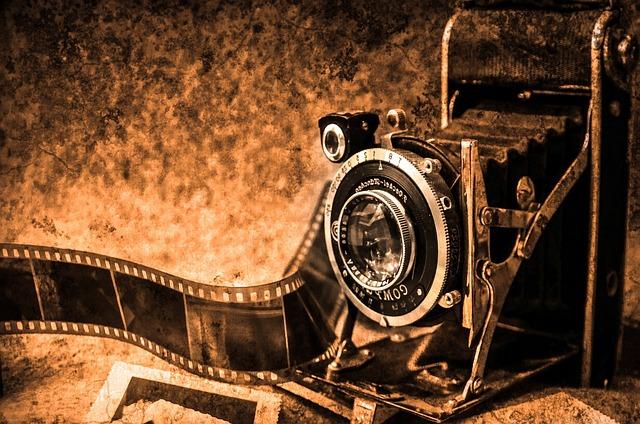In the ever-evolving landscape of cinema, classic films stand as enduring testaments to the art of storytelling, having pioneered techniques that continue to shape modern narratives. These cinematic masterpieces not only captured the imaginations of their time but also introduced innovative methods that remain influential today. By dissecting the narrative structures, visual compositions, and thematic explorations of these iconic works, we can uncover the foundational storytelling techniques that have transcended decades. This article delves into the pioneering approaches of classic films, demonstrating how their legacy persists in contemporary filmmaking, proving that while technology advances, the essence of compelling storytelling remains timeless.
Pioneering Narrative Structures in Classic Cinema
Classic cinema broke new ground by experimenting with non-linear storytelling, a technique that defied the traditional chronological narrative. Films like Orson Welles‘ Citizen Kane utilized fragmented timelines and multiple perspectives, inviting audiences to piece together the story like a puzzle. This innovative approach not only enhanced the depth of character development but also engaged viewers on a more intellectual level, challenging them to actively participate in the unfolding narrative.
Moreover, directors like Alfred Hitchcock revolutionized the use of visual motifs and symbolism to convey complex themes. By integrating these elements seamlessly into the plot, classic films transcended mere entertainment, offering layers of meaning that could be interpreted in various ways. Key techniques included:
- Montage sequences: A rapid series of images to convey the passage of time or emotional intensity.
- Flashbacks: Providing backstory and context, enriching the narrative fabric.
- Dream sequences: Blurring the lines between reality and imagination, enhancing thematic depth.

Mastering Visual Storytelling: Lessons from Iconic Films
Classic films have long been the blueprint for innovative storytelling, with directors and cinematographers using groundbreaking techniques that continue to influence contemporary cinema. These films introduced visual storytelling methods that transcend dialogue, relying on imagery to convey complex narratives. Alfred Hitchcock’s use of suspense in films like “Psycho” demonstrates how camera angles and lighting can create tension and evoke emotion. His pioneering use of the dolly zoom in “Vertigo” remains a staple in portraying disorientation and psychological depth.
- Symbolic Imagery: Films like “Citizen Kane” employed symbolic visuals, such as the iconic “Rosebud” sled, to add layers of meaning and provoke audience introspection.
- Non-linear Narratives: “Pulp Fiction” redefined storytelling by embracing a non-linear narrative structure, challenging viewers to piece together the plot like a puzzle.
- Montage Editing: Sergei Eisenstein’s “Battleship Potemkin” showcased the power of montage editing, using quick cuts to intensify emotion and propel the story forward.
These techniques, while developed decades ago, remain relevant, proving that the language of cinema is as much about the visual as it is about the spoken word. Filmmakers today continue to draw inspiration from these classic innovations, ensuring that the art of visual storytelling evolves while honoring its storied past.

Character Development: Timeless Techniques from the Golden Age
The Golden Age of cinema gifted us with characters that continue to resonate, thanks to pioneering storytelling techniques. Filmmakers of the era crafted multi-dimensional characters through methods that remain vital for modern narratives. Complex character arcs were a staple, often showcasing transformation and growth that mirrored societal shifts. Characters weren’t just static figures; they evolved, facing internal and external conflicts that added depth and relatability.
Classic films often employed symbolism and motifs to enrich character development. These tools provided subtle layers of meaning, encouraging audiences to engage more deeply. Directors also utilized dialogue sparingly, allowing non-verbal cues to reveal inner thoughts and emotions. This emphasis on visual storytelling made characters feel more authentic and grounded. By blending these timeless techniques, filmmakers of the Golden Age set a benchmark for creating compelling and enduring characters.
- Multi-dimensional Arcs: Characters that evolve with the narrative.
- Symbolism: Use of motifs to add layers of meaning.
- Visual Storytelling: Emphasis on non-verbal cues over dialogue.

Harnessing Suspense and Pacing: Classic Methods for Modern Filmmakers
Classic cinema is a treasure trove of techniques that continue to inspire modern filmmakers, particularly in the realms of suspense and pacing. Alfred Hitchcock, often hailed as the “Master of Suspense,” revolutionized the way tension is built through his meticulous control of timing and audience expectations. By revealing crucial information to the audience before the characters themselves are aware, Hitchcock created a sense of dramatic irony that keeps viewers on edge. This technique is evident in films like Rear Window and Psycho, where the deliberate pacing allows suspense to simmer and escalate, proving that less is often more when it comes to building tension.
- Slow Reveals: Gradually unfolding plot details to maintain interest.
- Strategic Silences: Using pauses to heighten emotional impact.
- Character Perspective: Offering viewers a glimpse into a character’s mind to create empathy and tension.
Modern filmmakers can harness these classic methods by integrating them with contemporary storytelling techniques. Christopher Nolan, for instance, employs non-linear narratives and layered timelines, reminiscent of Hitchcock’s suspenseful reveals, to craft complex, engaging stories. By studying these timeless techniques, today’s filmmakers can create compelling narratives that captivate audiences and stand the test of time.

